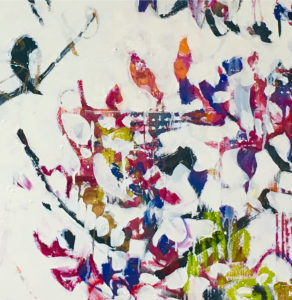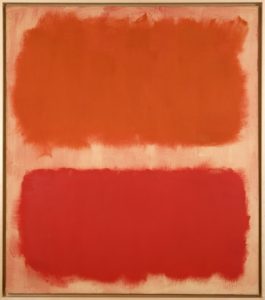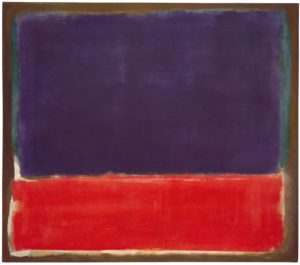Dear Artist,
On Sunday Elaine Caulton wrote, “I have tried to find out what the ramifications would be if I chose to paint under a ‘nom de brush.’ I could sign paintings with whatever name I chose, but where does that leave me regarding payments for paintings sold, tax returns, etc.? Actors use stage names — why can’t I? (No, I’m not wanted by the Mob, but maybe I’m a little paranoid at putting my real name ‘out there.’) Any information you could provide would be a help!”
Thanks, Elaine. Elaine also goes by Mary Martin van Pablo Degas Gogh Hepworth Kitaj Hamilton Finlay-Frink. Perhaps it is because she has too many names that I was not able to find her on the Internet. I have to admit I once considered having several names myself, and then reconsidered. Actually, many creators want to hide behind a pseudonym — even a variety of them to match the artists’ various styles. The idea of filing taxes under other names is appealing too, with multiple personas below the radar significantly lessening the overall bite. I don’t recommend it, unless you think you might enjoy the quiet solitude of a Federal slammer.
The idea of many names arises from a personal identity crisis and needs to be dealt with. On our short walk on this planet we are all given a precious and unique “me.” We need to realize that there is not enough time to be more than one me. We need singularity to shine our individual light. For most of us, a single moniker is enough. Archie Leach’s transformation to Cary Grant was not self-inflicted — it was the whim of Paramount Studios. He would have been just as funny and effective as a Leach.
Elaine, you need to realize that as a creative person you have the capacity to do many things. This is nothing to be ashamed of, nor is it unusual. Forget yourself and concentrate on whatever is attracting you at the time. By diluting your name, you also dilute your ego. You need your ego and your ego needs you. Settle on a single label, your personal brand. For Internet purposes you might make it a bit unique — needed to distinguish yourself from all the others. Sign proudly and uniformly. People will not be confused by you; they will begin to appreciate your diversity, you will feel better about who you are, and all the cheques will arrive in your name.
Best regards,
Robert
PS: “Creativity does not depend on inherited talent or on environment or upbringing; it is a function of the ego.” (Silvano Arieti)
Esoterica: In The Rise of the Creative Class, Richard Florida describes the vast number of frustrated artists making the transition from the dullness of drudge jobs to the elixir of creativity. The democratization of the arts, which includes cooking, teaching, barbering, gardening, child rearing and Web development, is one of the sociological phenomena of our times. Individualists from the shop floor are recognized by name as they step forward with ideas and systems. Next time someone is handing out name tags, you need to take the one that says, “Hi, I’m Elaine.”
This letter was originally published as “Nom de brush” on November 27, 2007.
Have you considered a Premium Artist Listing? With each letter, an artist is featured at the bottom of this page. The Premium Artist Listings are a means of connecting artist subscribers through their work. Proceeds from each listing contribute to the production of The Painter’s Keys.
“I don’t express myself in my paintings. I express my not-self.” (Mark Rothko)
Featured Workshop
 Join Ellie Harold for “Intuitive Painting: Permission to Paint Expressively,” designed especially for mature women artists of all skill levels who wish to explore this medium for soulful exploration. The retreat provides attractive accommodations (your own room!) along with lightly structured activities for centering, relaxation and low stress art-making. You’ll have plenty of free time to muse, paint, write and reflect while enjoying the colors, textures and flavors of San Miguel. This Retreat has the potential to transform not only your art but your life! You’ll return home with a specific art “care plan” to assure support for further creating. Details at www.EllieHarold.com.
Join Ellie Harold for “Intuitive Painting: Permission to Paint Expressively,” designed especially for mature women artists of all skill levels who wish to explore this medium for soulful exploration. The retreat provides attractive accommodations (your own room!) along with lightly structured activities for centering, relaxation and low stress art-making. You’ll have plenty of free time to muse, paint, write and reflect while enjoying the colors, textures and flavors of San Miguel. This Retreat has the potential to transform not only your art but your life! You’ll return home with a specific art “care plan” to assure support for further creating. Details at www.EllieHarold.com.
Featured Artist
My art represents a journey that has been on-going for more than forty years. Guidance from some wonderful artists. Years of plein-air painting and instructing have developed a style that I can call my own. I believe that my current work has attained its highest level so far, reflecting the depth of my absorption in the wonder and beauty of the world around me. I have learned that, as an artist, I will never stop looking for better ways to express my feelings in art and that struggling to more fully understand myself is integral to my painting; a philosophy that was part of every workshop that I gave – and remains true today.








14 Comments
In the movie “Charade”, Audrey Hepburn asks the mysterious Cary Grant character what his real name is, and he answers “Archie Leach” ;-)
The only thing I sometimes do differently is to use a small monogram icon for the very small paintings where the full name is difficult to fit in without intruding on the image. But even that is standardized in how I do it.
For my tiny paintings I sign on the outside rim and back of the painting
” … maybe I’m a little paranoid at putting my real name ‘out there’ “. Elaine: I ‘m a psychotherapist as well as an artist and if you were to sit down with me while I was wearing my therapist hat, my interest in pursuing that statement with you would be primary. I would ask if you are genuinely concerned about the repercussions of negative actions against you by revealing your name in a broader way, contingent with the positive creative side of you? Or are would you be simply hiding your light under a bushel because of lack of confidence in wider perception of you and your artistic skills? I have signed my last name and the year of creation on all 832 works of art I have created in the past 50 years. And displayed them in 45 solo shows and hundreds of groups exhibitions. And nowadays promote my work using my full name on my website and on various social media platforms. With absolutely no negative repercussions, ever. And sales of 75% of my output over time. … Just sayin’ … Name yourself and be proud!
What is your website, if I may ASK?
In my middle years I tried using my rather unknown first name and using it singly. I tried it on paintings a bit different from the ones on which everyone could identify me. It was never a tax problem. I didn’t sell any of those.
Our sense of “self” changes a lot over time. Looking back to young and ignorant days, I recall having discussions with fellow artists about how to sign a name when I should have been more focused on how to mix colours. Insecurity beholds fear of saying who we really are. I can remember not really wanting to put my name on a painting I knew wasn’t as good as what I wanted it to be, but I signed it modestly in the lower corner because that shows commitment. Not a big deal, just sign it. I look at signatures on paintings if they catch my interest because I want to know the name of who painted them. It’s all pretty simple. I know I wasted gallons of sweat over such simple things in my past. I love being old. :) uh, I mean wise and mature.
Women have a little tougher time hanging onto a single name, as when we marry we have been expected to change to our husband’s name. Then if that husband dies or is divorced, a new marriage means a new last name. So there’s three names: maiden name, married name, and next married name. I ended up shedding all last names and taking my first and middle name as my permanent legal name, but I still have paintings out there with my maiden name or my first married name on them, Luckily (I guess) few of them sold!
I have been wrestling with this idea. I am about to embark on some artistic pursuits and really feel I want to do so under my maiden name. I like your solution, Suzanna!
I’ve been married twice but it never occurred to me to change my name. I guess, like Sara, I was too connected to my father to consider it? Or just that I was always an artist from an early age so my name was my name and I wasn’t about to change it when I got married. Which was lucky since both of my husbands were happy with my name and my occupation.
The term ‘nom de plume’ has a long and varied history which actually precedes the existence of the telephone. We now live in a time where, mostly thanks to social media, merely revealing your identity online puts your privacy, and more, at considerable risk. This is not the fault of social media itself directly, but rather of some of those who use it to serve their own agendas. In my case, I never use my real name online and I avoid social media platforms like the proverbial Plague. Not so long ago, Andy Warhol predicted that: In the future, everyone will be famous for fifteen minutes. What he didn’t comment on was what might happen after that ‘fifteen minutes’ has elapsed. Fame, and notoriety, have become their own currency in a world where individuals are measured in terms of their ‘social equity’. By complete strangers. One thing I have learned over the last two years of the pandemic is that ‘social distancing’ has many far-ranging advantages.
There is a street artist who is now painting canvases which he sells for many thousands of dollars. I think they look like they were done with Etch-A-Sketch, but, hey, who am I to judge what some call ‘art’? The guy’s pseudo is Zero Gradient!
Brilliant, I think. Love the double intend re but the art? Not so much.
We are now living in a time of rising antisemitism so it is ironic that you feature Mark Rothko. He changed his name from Marcus Rothkowitz in response to a rise in antisemitism in the Untied States. “plus ça change, plus c’est la même chose.
Cary Grant is more appealing, than Archie Leach.
I have a nom de brush because I didn’t want people to be able to look me up with my actual name and make things complicated for several reasons. But I put a lot of thought into the name I wanted and how to sign it but I didn’t deviate so much from the original that I had to pay for another identity. In fact, the bank doesn’t hesitate when they see the other name on the cheque because it’s close enough apparently. And, obviously I don’t make enough for it to be an issue according to the bank’s point of view. My business card and website has my nom de brush. I have my given name and the name I gave myself. As time goes on, I’m thinking of actually changing my name officially except the money is the main obstacle. Also when anyone makes a legal switch, they have to look at the consequences of changing all the important documents and degrees and/or certificates. Since I’m older and semi retired and not using my degrees anymore, I think there’s less worry for my situation as an older artist. Looking at someone using many multiple identities, I can think of a few problems with that; one being customers keeping up with their favorite artist when there are too many labels to follow, two being the artist juggling too many identities unnecessarily and becoming scattered as a result, three depending on what the arrangement is for payment having to to pay extra for business accounts or filling out the wrong name which is the kind of headache I’d like to avoid.